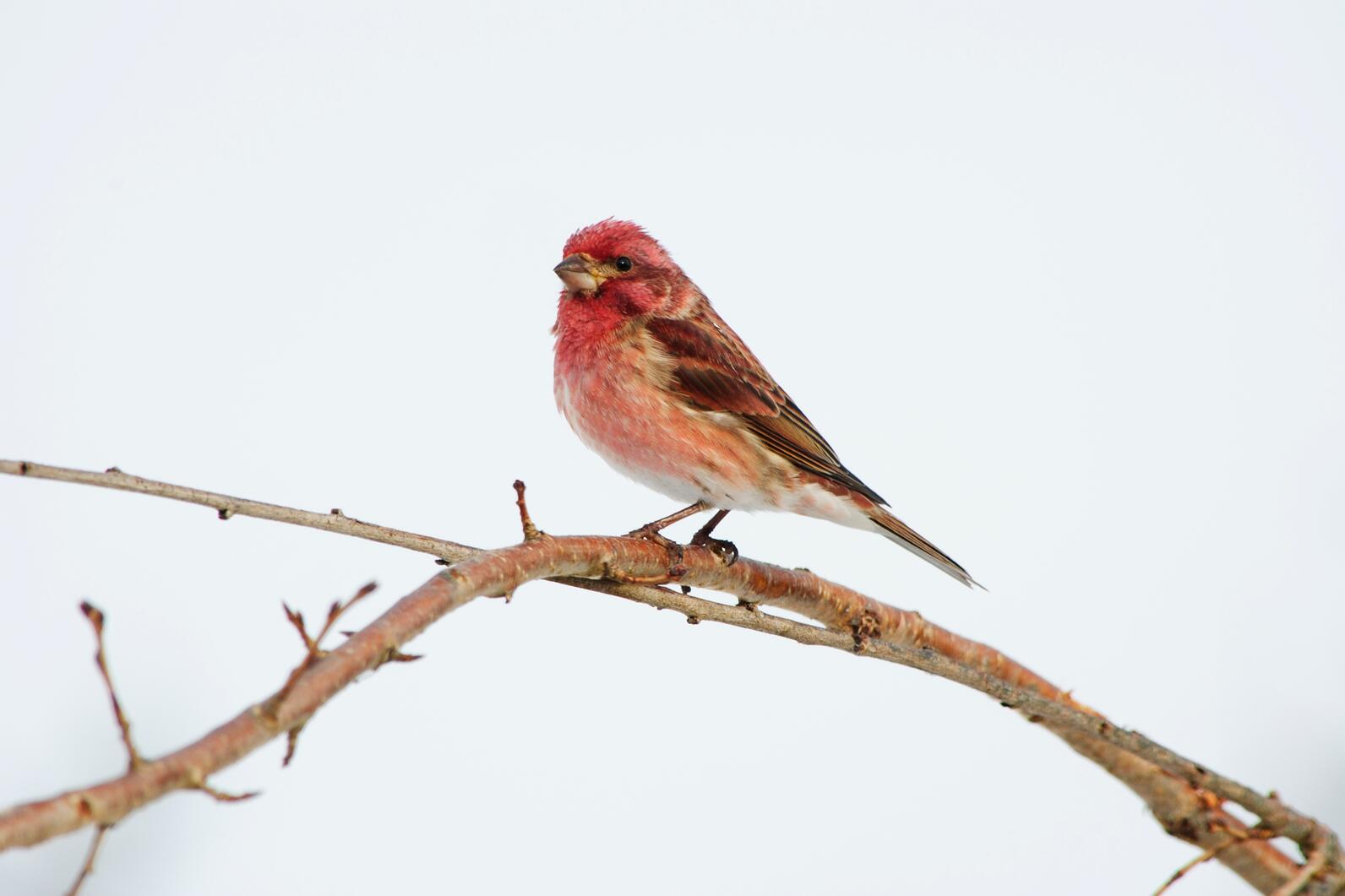As winter begins across the Great Lakes region, bird watchers are eagerly awaiting the arrival of winter finches.
It’s not every year that winter finches leave their breeding grounds in the boreal forests. Finches depend on cone and berry crops of the boreal forest for food each winter. When there is not enough food, or when crops get depleted through the winter, these birds will migrate outside of their usual wintering grounds and into the Great Lakes.
The Finch Research Network monitors crops to help predict the movements of some northern finches including Purple Finches, Common and Hoary Redpolls, Pine Siskins, Evening and Pine Grosbeaks, and nomadic White-winged and Red Crossbills. Check out this year’s Winter Finch Forecast to see which species you can expect.
Finches play an important role in keeping ecosystems healthy. By spreading seeds, they help maintain a variety of plants, which supports biodiversity. Finches are also sensitive to changes in the environment, making them useful indicators of ecosystem health. When finch populations rise or fall, it can signal the effects of habitat loss, climate change, and other environmental challenges. Efforts to protect finches support the overall health of ecosystems, benefiting many other species that share their habitats.
Learn how to identify, find, and attract some of these winter gems:

A small finch, Purple Finch males have a raspberry red head, breast and back and females are brown, with thickly streaked undersides, and a whitish eyebrow and dark line down the side of the throat. A Purple Finch may be mistaken for a House Finch, a year-round finch species, though House Finch males have orange-red coloration that is more concentrated around the face and upper chest and females are a paler brown and lack the strong facial markings of female Purple Finches.
-
Find them in wooded and semi-open areas, including forests, suburbs, swamps, and overgrown fields.
-
Attract them with sunflower seeds, nyjer, and millet. Use small and large tube feeders or hopper feeders. Plant native seed-producing trees and grasses.
Redpolls


In 2024, the American Ornithological Society updated the standardized list of North American bird species and lumped the Common Redpoll, Hoary Redpoll and European Lesser Redpoll into one species simply called, Redpoll. Redpolls, are small finches with a short conical yellow bill. Males and females have brown and streaked backs, sides, and a small red patch on the crown. Males will also have a pink-washed chest, which females lack.
-
Find them in semi-open country, including woodland edges and brushy or weedy fields.
-
Attract them with sunflower seeds and nyjer. Use small and large tube feeders and hopper feeders. Plant native seed-producing trees and grasses.

While it behaves like a Goldfinch, the Pine Siskin is brown and streaked like a sparrow, but with a narrower, sharp-pointed bill and yellow edging in their wing and tail feathers, which is most visible in flight. Males and females look alike.
-
Find them in semi-open areas, woodland edges, and weedy fields.
-
Attract them with sunflower seeds and nyjer. Use small and large tube feeders and small hopper feeders. Plant native seed-producing trees and grasses.

The Evening Grossbeak is colorful, chunky, and large-billed. Males are yellow and black with a bold white patch in the wing. Females are mostly gray with a yellow wash on the neck and white and black wings.
-
Find them in noisy flocks at bird feeders, in box elders, maples, woodlands, and fruiting shrubs.
-
Attract them using hopper or large tuber feeders with sunflower seeds. Plant native fruiting shrubs.

The Pine Grosbeak is a large, heavy-chested finch with a thick and stubby bill. Males are rosy red and gray while females are golden yellow and gray. Both males and females have two white wing bars and are very tame.
-
Find them in deciduous trees, especially fruiting trees, pine groves, and other conifers.
-
Attract them with suet, sunflower seeds, or fresh fruit. Use hopper or large tuber feeders. Plant native fruiting shrubs.


The White-winged Crossbill and Red Crossbill are medium-sized finches with a crisscrossed bill. Red Crossbills are more common, and males are red overall with dark brown, unmarked wings. Female Red Crossbills are yellowish with dark, unmarked wings. White-winged Crossbills are less common, and males and females are similarly colored as Red Crossbills. You can identify White-winged Crossbills by their two bold white wing bars, which Red Crossbills lack.
-
Find them in wandering flocks in evergreen woods, conifer plantings, or suburbs.
-
Attract them by planting native conifer trees.
ABOUT MI BIRDS
MI Birds is a public outreach and engagement program created by Audubon Great Lakes and Michigan Department of Natural Resources, which aims to increase all Michiganders' engagement in the understanding, care, and stewardship of public lands that are important for birds and local communities.












